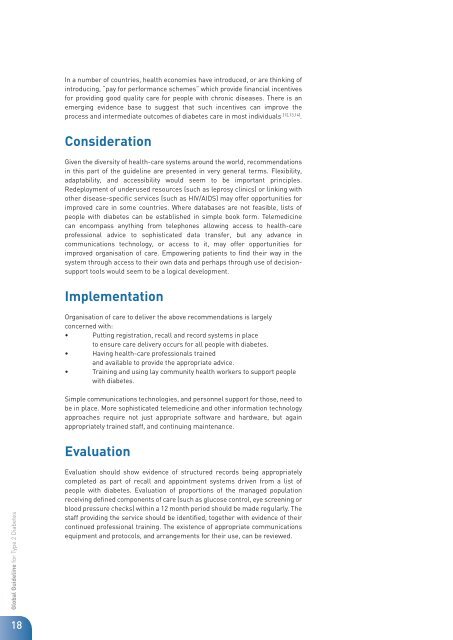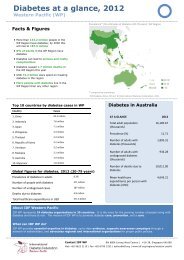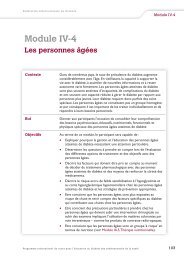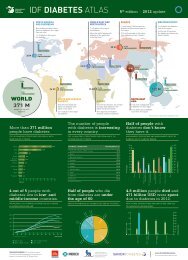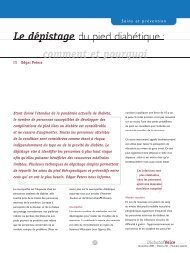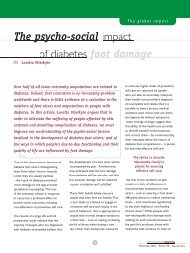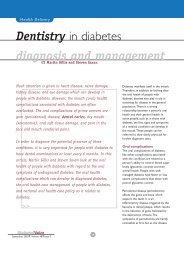Evidence-base - International Diabetes Federation
Evidence-base - International Diabetes Federation
Evidence-base - International Diabetes Federation
Create successful ePaper yourself
Turn your PDF publications into a flip-book with our unique Google optimized e-Paper software.
Global Guideline for Type 2 <strong>Diabetes</strong><br />
18<br />
In a number of countries, health economies have introduced, or are thinking of<br />
introducing, “pay for performance schemes” which provide financial incentives<br />
for providing good quality care for people with chronic diseases. There is an<br />
emerging evidence <strong>base</strong> to suggest that such incentives can improve the<br />
process and intermediate outcomes of diabetes care in most individuals [12,13,14] .<br />
Consideration<br />
Given the diversity of health-care systems around the world, recommendations<br />
in this part of the guideline are presented in very general terms. Flexibility,<br />
adaptability, and accessibility would seem to be important principles.<br />
Redeployment of underused resources (such as leprosy clinics) or linking with<br />
other disease-specific services (such as HIV/AIDS) may offer opportunities for<br />
improved care in some countries. Where data<strong>base</strong>s are not feasible, lists of<br />
people with diabetes can be established in simple book form. Telemedicine<br />
can encompass anything from telephones allowing access to health-care<br />
professional advice to sophisticated data transfer, but any advance in<br />
communications technology, or access to it, may offer opportunities for<br />
improved organisation of care. Empowering patients to find their way in the<br />
system through access to their own data and perhaps through use of decisionsupport<br />
tools would seem to be a logical development.<br />
Implementation<br />
Organisation of care to deliver the above recommendations is largely<br />
concerned with:<br />
• Putting registration, recall and record systems in place<br />
to ensure care delivery occurs for all people with diabetes.<br />
• Having health-care professionals trained<br />
and available to provide the appropriate advice.<br />
• Training and using lay community health workers to support people<br />
with diabetes.<br />
Simple communications technologies, and personnel support for those, need to<br />
be in place. More sophisticated telemedicine and other information technology<br />
approaches require not just appropriate software and hardware, but again<br />
appropriately trained staff, and continuing maintenance.<br />
Evaluation<br />
Evaluation should show evidence of structured records being appropriately<br />
completed as part of recall and appointment systems driven from a list of<br />
people with diabetes. Evaluation of proportions of the managed population<br />
receiving defined components of care (such as glucose control, eye screening or<br />
blood pressure checks) within a 12 month period should be made regularly. The<br />
staff providing the service should be identified, together with evidence of their<br />
continued professional training. The existence of appropriate communications<br />
equipment and protocols, and arrangements for their use, can be reviewed.


